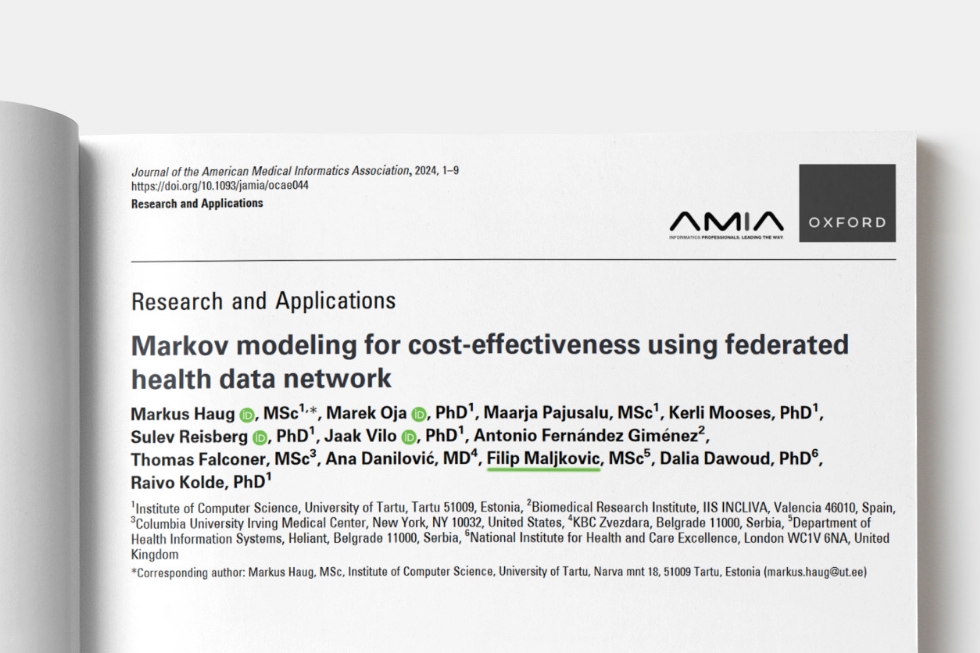Recently, the prestigious scientific magazine Journal of the American Medical Informatics Association (JAMIA) published a study in which the company “Heliant” and CHC Zvezdara took part.
This multinational study in the field of health economics included data from a total of 5 institutions within Serbia, Estonia, Spain, the USA, and researchers from Columbia University, the University of Tartu, the National Institute for Health and Care Excellence of the United Kingdom and the Institute for biomedical research in Valencia. MD Ana Danilović, internist at CHC Zvezdara and Filip Maljković, head of the “Heliant” company development team participated in the study.
The results of a health economic study of a healthcare facility are often not applicable to others, which, in addition to the absence of data from the real world, makes their performance much more difficult. Previously, due to the lack of data standardization, such studies were performed using special software solutions for each individual healthcare facility, which required spending lots of of time and other resources.
To overcome these challenges, researchers delved into standardized clinical data mapped to the OMOP CDM and searched for a more efficient way to conduct health-economic research on a sample of approximately 50,000 heart failure patients.
The aim of the study was to demonstrate the possibility of conducting such research on standardized databases using the Markov chain model on the example of comparing two different methods of monitoring patients suffering from heart failure.
The resulting models were used to compare the costs of monitoring and treatment, which, along with data on the length and quality of life of patients with heart failure, enabled a health-economic assessment of different methods of monitoring these patients.
The results of the study showed the applicability of standardized databases to the formation of health-economic models of greater efficiency, transparency and scalability. The used software packages, in addition to the software, also have an intuitive graphic interface, which makes it easier for health professionals to conduct such studies.
It is a completely new paradigm in conducting such studies that will enable more efficient and better decision-making, and thus better diagnosis and treatment of patients.
This is one of a series of scientific publications under the auspices of the international consortium EHDEN, through which four health institutions in Serbia were financed to translate their data into the world standard OMOP CDM format. This way of displaying health data is being developed by the scientific community so that as many anonymized patient data from different countries can be used in studies like this one.
These studies are conducted for scientific purposes, but often for drug regulatory bodies and agencies to make data-driven decisions based on monitoring disease incidence, drug use and safety, treatment outcomes, and other issues.
The scientific publication entitled: “Markov Modeling of Cost and Effectiveness Using Federated Health Data Network” is available here.
